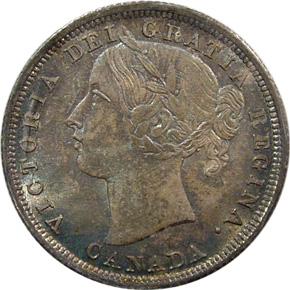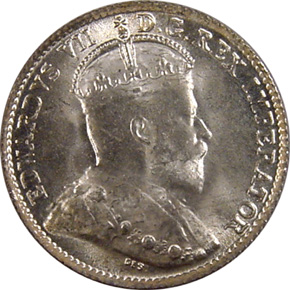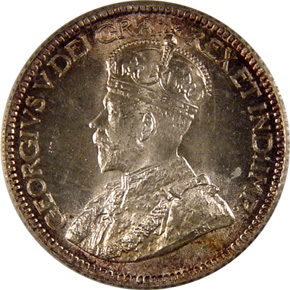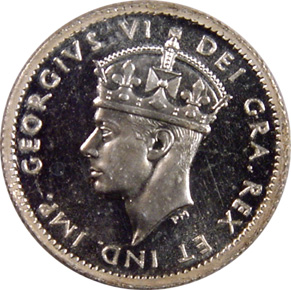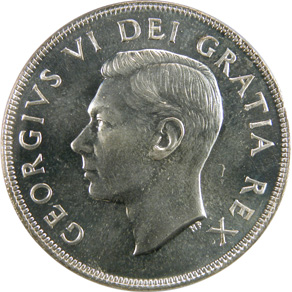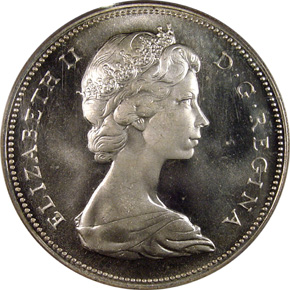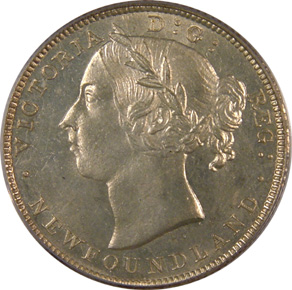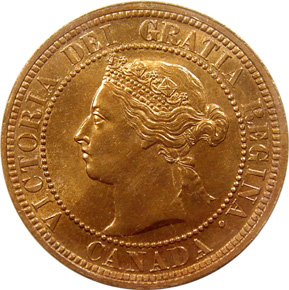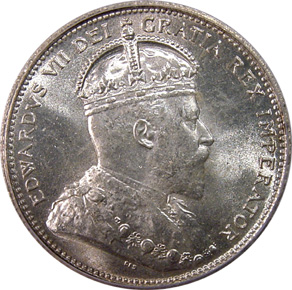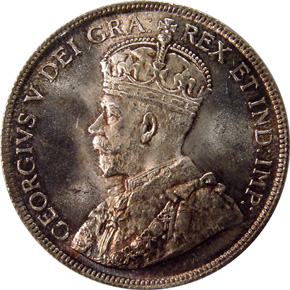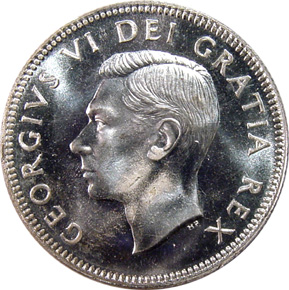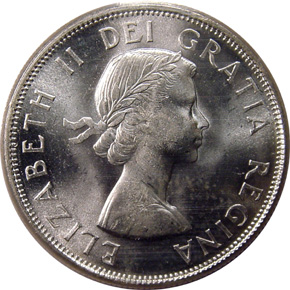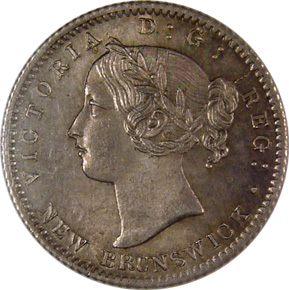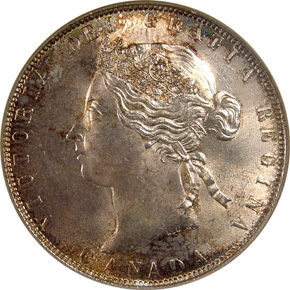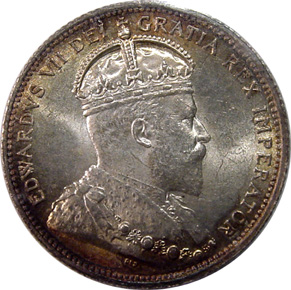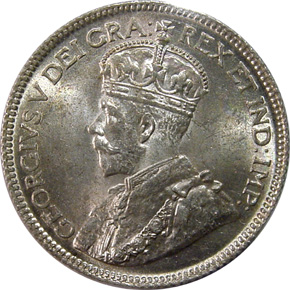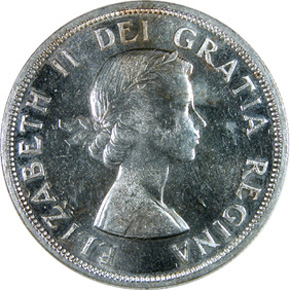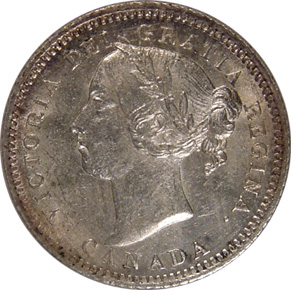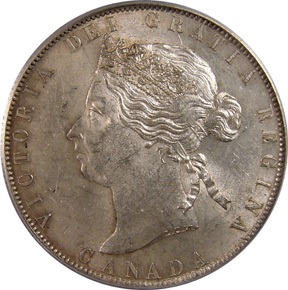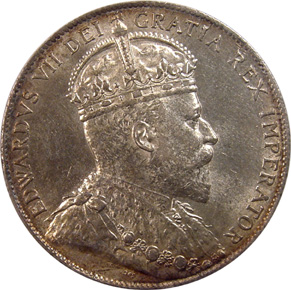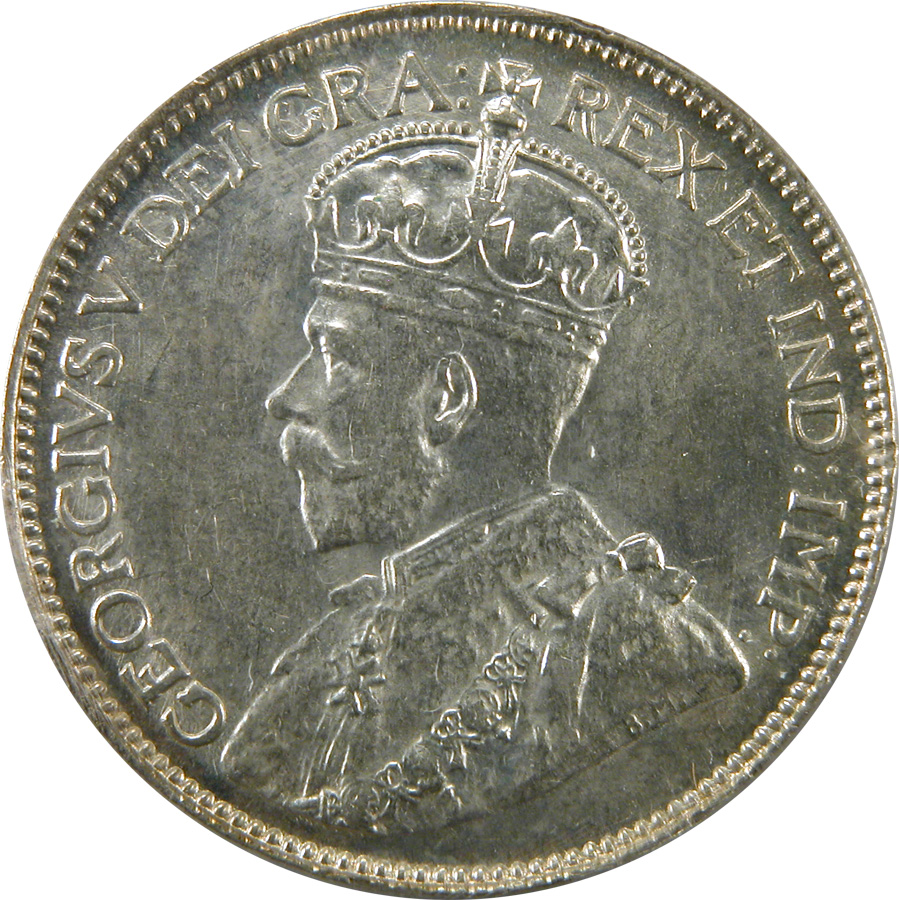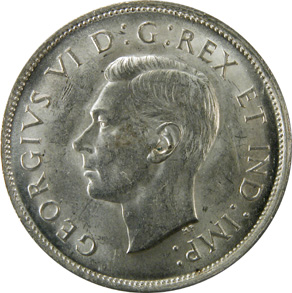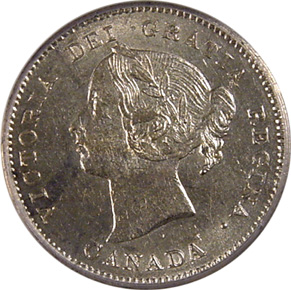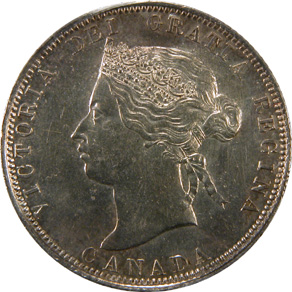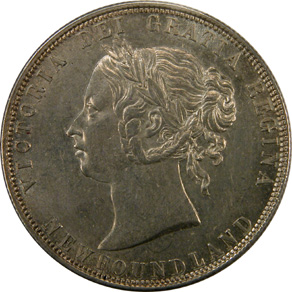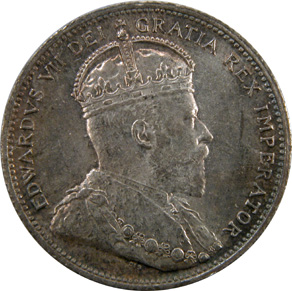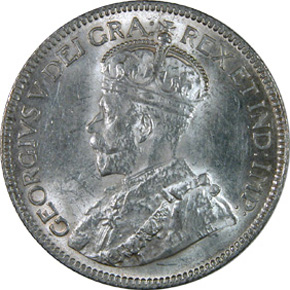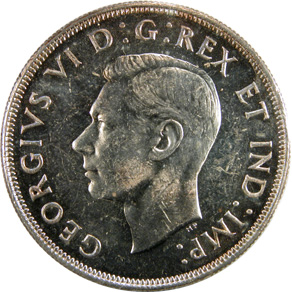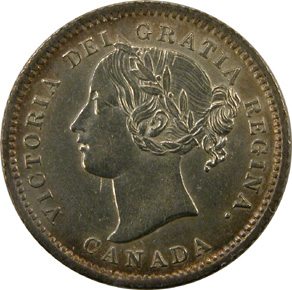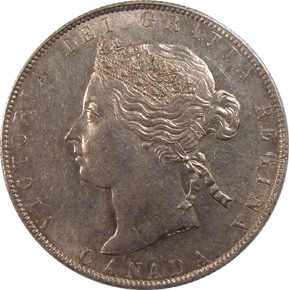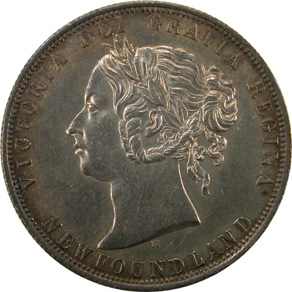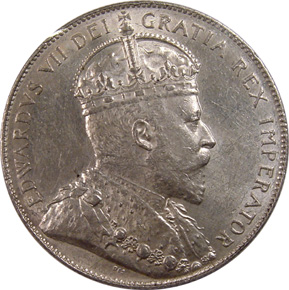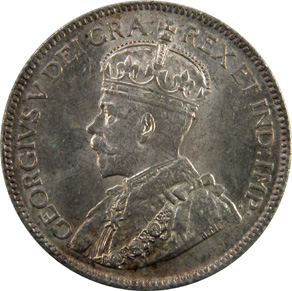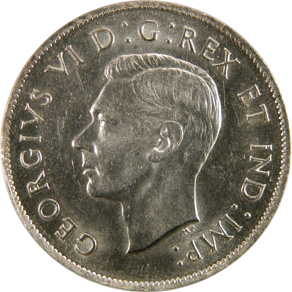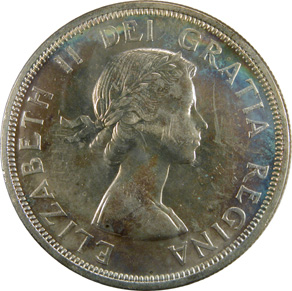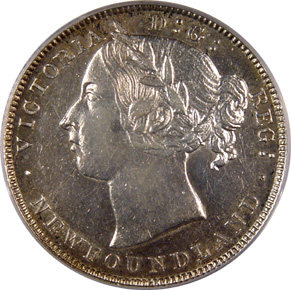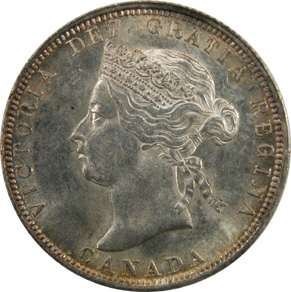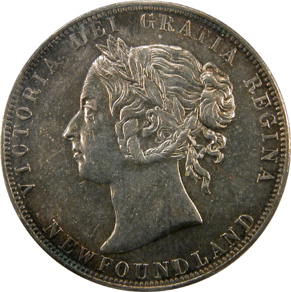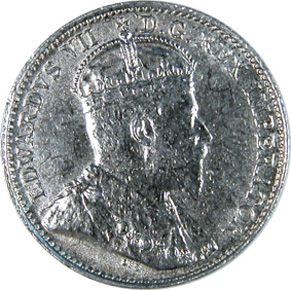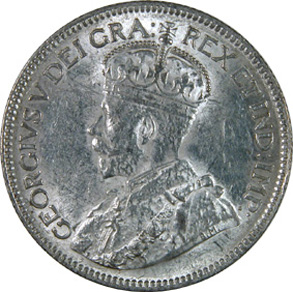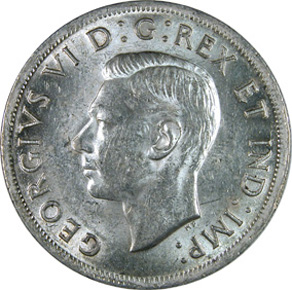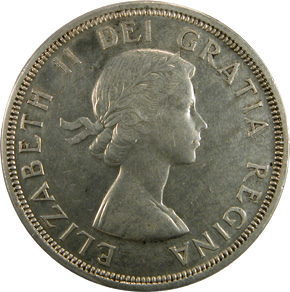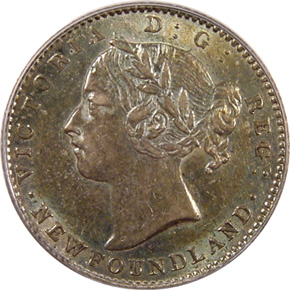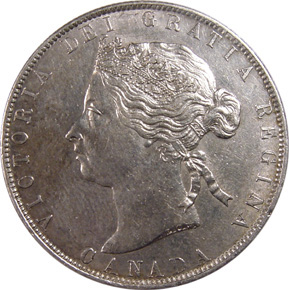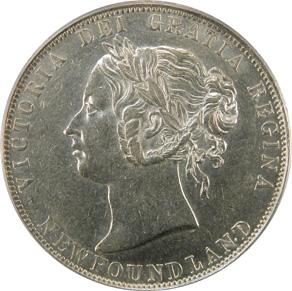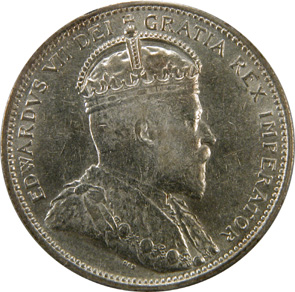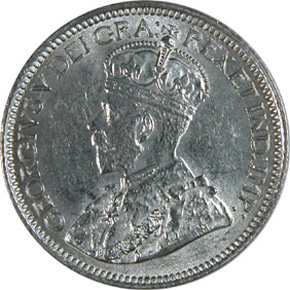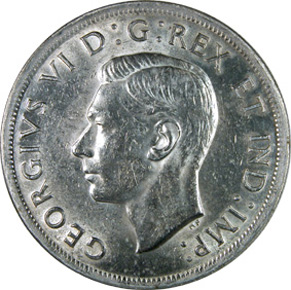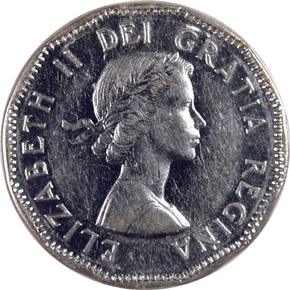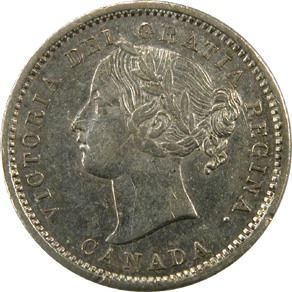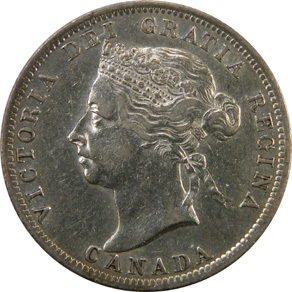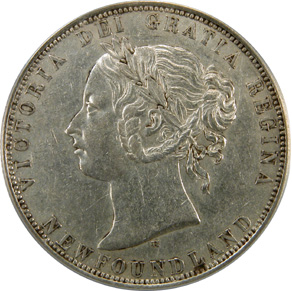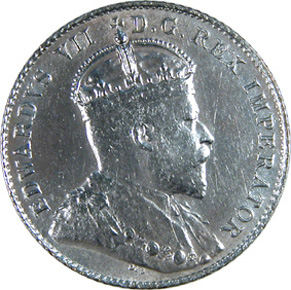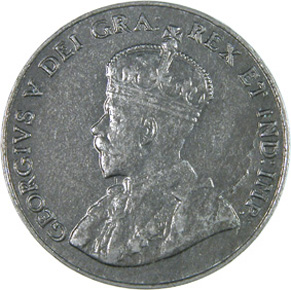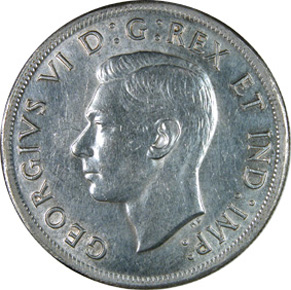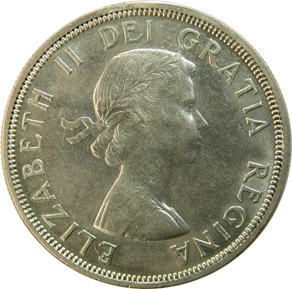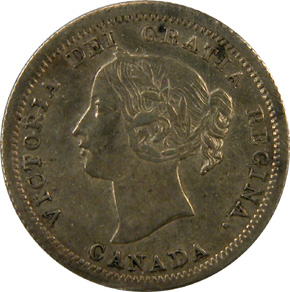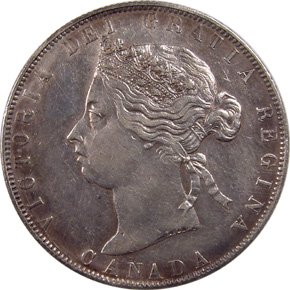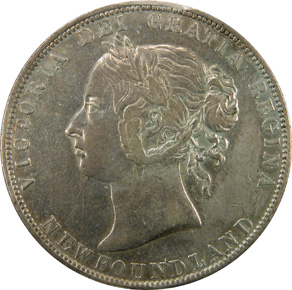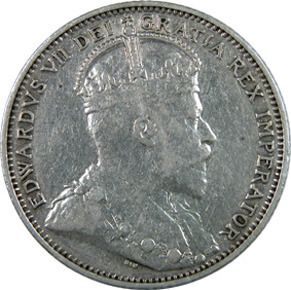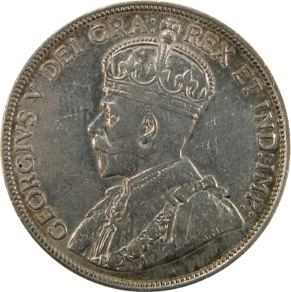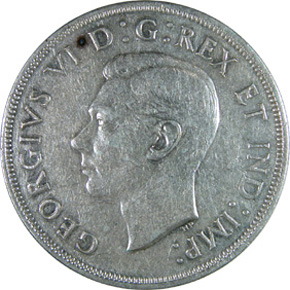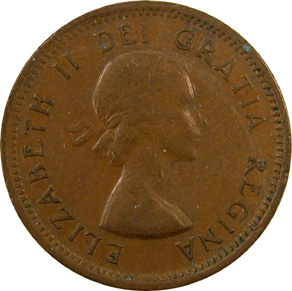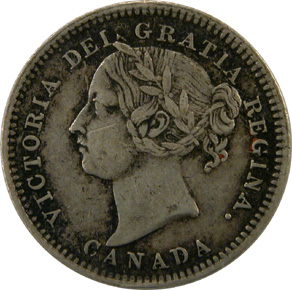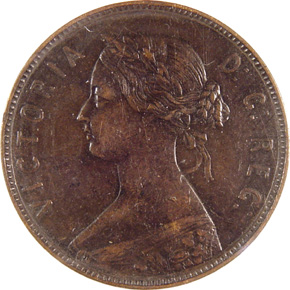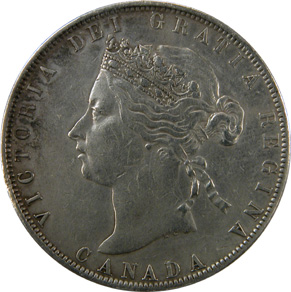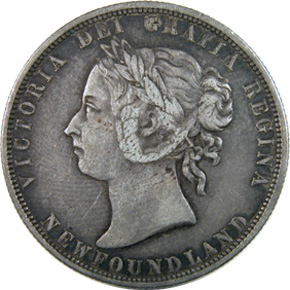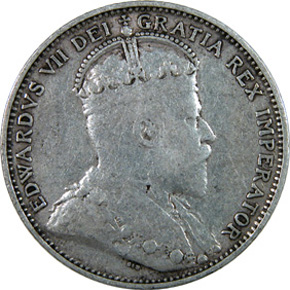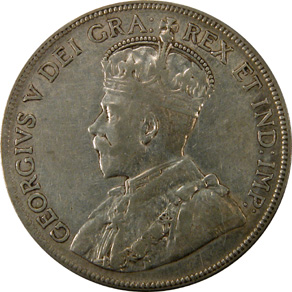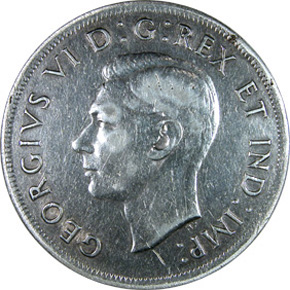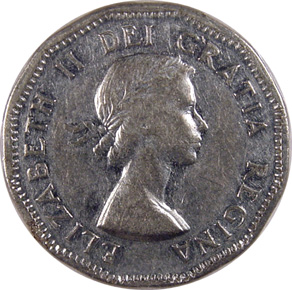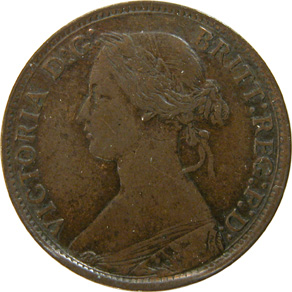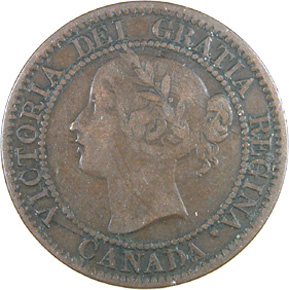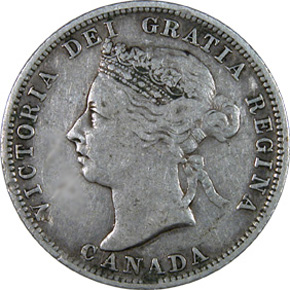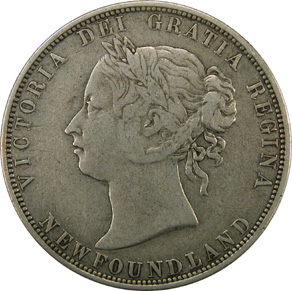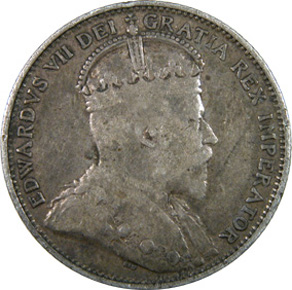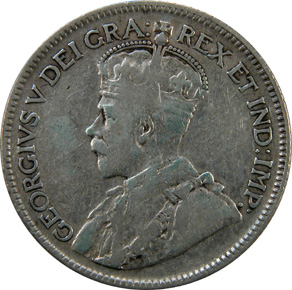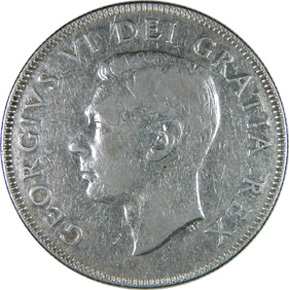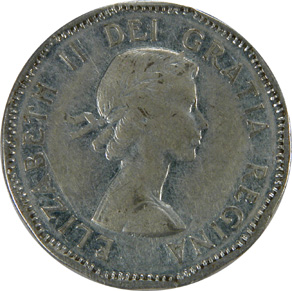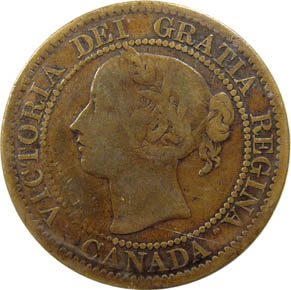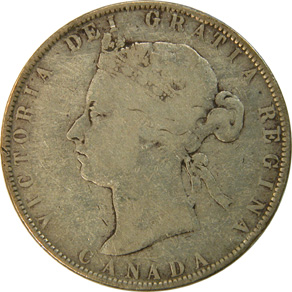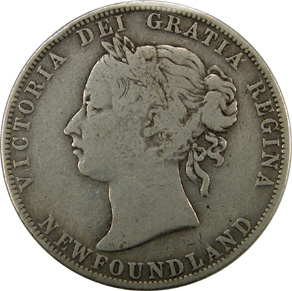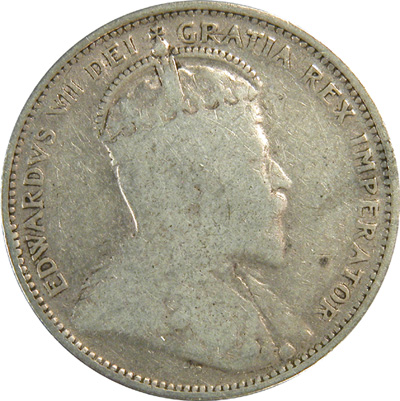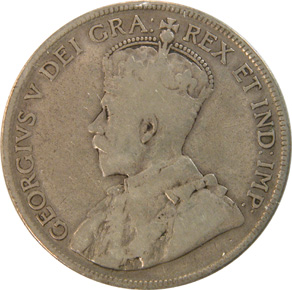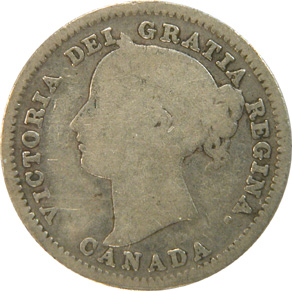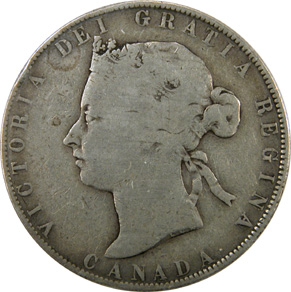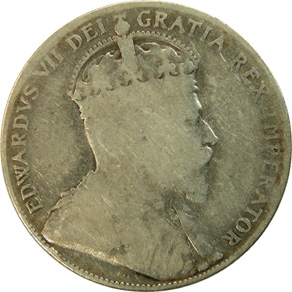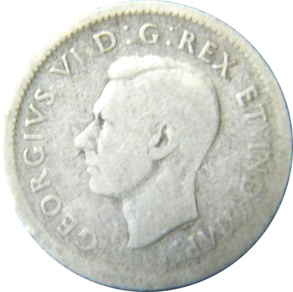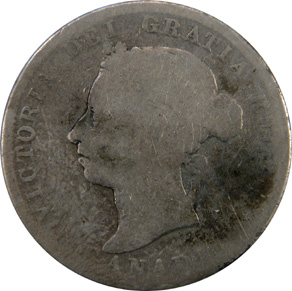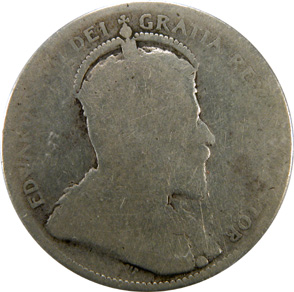Grading Canadian Coins
By Michael Walsh - Canadian Coinoisseur | Monday, 20 July 2009
The following content comes from the Canadian Coinoisseur website, which not longer exist since 2014, by Michael Walsh. To keep this information available to the public and for a perpetuity reason, we reproduced it here. Last update of the following content: July 20, 2009.
Coins are usually described by their country of origin, type, denomination, date, mint mark, variety and condition. With all but the last of these, there is rarely any ambiguity. However, with their state of preservation or condition, there often are differing opinions, so a standard system of grading coins has evolved which allows us to more clearly determine and communicate their relative quality.
Coins meant for use in daily commerce are referred to as "Business Strikes" and are generally mass-produced. In addition, Canada and other countries produce special pieces for official presentation or for collectors. These "Specimens", "Proofs" and "Proof-Likes" are usually carefully produced from specially prepared dies, and are given special handling and packaging. These pieces are quite noticeably different in quality from business strikes, and are classified and collected separately from them.
Coin Grades
Coin conditions range from the poorest state, where neither the date nor the designs are discernible, to the best state where all of the elements of the design are as clear and detailed as they were when they were struck at the mint. The first objective in grading coins is to determine whether the coin is Mintstate or if it is Circulated -- or in plain words, whether it is new or used. Mintstate coins must have absolutely no visible signs of wear on any part of the coin's surface. They are not necessarily flawless, as the majority will have small marks (not wear), resulting from, among other things, contact with other coins in hoppers, bins and counting machines at the mint and in bags during distribution to the banks. Circulated coins will have varying degrees of surface wear as a result of handling.
There are no exact scientific means available to measure the surface condition of coins, so grading is an art that takes into account many factors, both objective and subjective. Coin grading involves much more than simply determining whether the coin has seen wear or not. With eleven different Mintstate grades to chose from, the grader must accurately assess the condition of the surfaces, the quality of the lustre and the fullness of the strike, as well as the interplay of these factors with each other. However, unlike with US coin grading, eye appeal is not a factor in the technical grading of Canadian coins. If there is particularly attractive toning which greatly enhances the eye appeal of the coin, for example, this fact is appended to the grade such as "with Great Eye Appeal" or "with Superb Eye Appeal".
With circulated coins, the amount of wear is the most important consideration. But the fullness of the strike, the amount and quality of the residual lustre, the condition of the surfaces, the general quality of the piece, and many other factors also lend an influence. Sometimes there is thick and obscuring toning which may hide small surface marks, evidence of cleaning or signs of wear. All of these factors make the complex task of grading more difficult, and since a great deal of human judgment is involved, we can expect there to be some differences of opinion on the precise grade of many coins.
When a coin's condition is determined it is assigned one of a range of Circulated or Mintstate grades according to generally accepted grading standards. Early standards for grading coins used as few as six descriptive or adjectival terms: Good, Very Good, Fine, Very Fine, Extremely Fine and Uncirculated, to describe grades. Today, with uncertified coins, a dozen or so grades are commonly seen, however, with Certified coins, at least fifteen grades are regularly used just to assess the circulated coins, while a further ten grades are used to designate the Mintstate coins, giving a total of more than twenty-five grades.
Coin Grading Systems
Historically, an adjectival system was virtually the only one used to grade coins, however, in the late 40's a numerical system was devised by an American, Dr. William Sheldon, using numbers from one to seventy. The circulated grades were assigned numbers from 1 to 59, while the numbers from 60 to 70 were used for the Mintstate grades. The basis of his number selection was the relationship of prices of early American copper coins with their grades. For example, in the late 1940's, the price of a typical Mintstate coin (MS-60) was about five times the price of a typical Fine (F-12) example of the same date and variety. It is important to note that both the adjectival and the numerical grading systems use the same grade definitions.
Sheldon's numerical system has been extended far beyond early American copper coins and is now the generally accepted standard for grading in most areas of North America. Not all of the numbers in the range are used, and the following are the more commonly seen numerical grades and their adjectival equivalents:
- aG-3 About Good
- G-4 Good
- VG-8 Very Good
- VG-10 Very Good Plus
- F-12 Fine
- F-15 Fine Plus
- VF-20 Very Fine
- VF-30 Very Fine Plus
- EF-40 Extremely Fine
- EF-45 Choice Extremely Fine
- AU-50 About Uncirculated
- AU-55 Choice About Uncirculated
- AU-58 Very Choice About Uncirculated
- MS-60 Typical Mintstate
- MS-61 Typical Mintstate
- MS-62 Select Mintstate
- MS-63 Choice Mintstate
- MS-64 Very Choice Mintstate
- MS-65 Gem Mintstate
- MS-66 Gem Mintstate
- MS-67 Superb Mintstate
- MS-68 Superb Mintstate
- MS-69 Superb Mintstate
- MS-70 Perfect Mintstate
Proofs, Proof-Likes and Specimens are designated with the prefixes PF, PL and SP, and further assigned a numerical grade: 60, 63, 65 and so on. Impaired pieces (those that have sustained wear through either mishandling or circulation) are assigned grades below 60, such as SP-55, and PF-50. Except in years or varieties where only Proofs or Specimens were issued, it is the exception to find a grade assigned below 50 since the surface and strike characteristics that are generally required for correct attribution are most likely gone.
Warning
Coins may be graded by someone with little or no grading skill or experience, or by a person trying to deceive. If you are buying uncertified coins, particularly sight-unseen, it is wise to determine the credentials of their grader, since inexperience or error on the part of the grader may lead to incorrect grading - and usually not in your favor. If you have no knowledge of the integrity nor of the skills and experience of the coin's grader, then it is wise to stick to buying Certified coins until your own grading skills are keenly honed. Until then, it is better to allow the reputation and integrity of the Certification Services, and their particular grading standards, be your protection.
Coin Certification Services
A number of North American companies offer third party coin certification services, which include:
- Authentication, which determines whether a particular coin is genuine or counterfeit;
- Classification as to whether the coin is a Proof, a Specimen, a Business Strike, etc;
- Attribution, which correctly identifies the coin's varieties and sometimes its provenance; and
- Grading, which is a professional assessment of the coin's condition.
In North America, these days, most important coins are submitted by their owners for certification. This provides them with an independent authentication, classification, attribution and grading assessment recorded on a serial numbered certificate which is sealed with the coin in a tamper-evident plastic holder. This unit is referred to as a "slab" and an uncertified coin is called "raw". The certification services are widely used by collectors and investors who recognize their own grading skills may not be at an expert's level. Dealers also make much use of these services because their clients often demand that their coins be certified. Be aware, however, that between the various Coin Certification Services, there are identifiable areas of disagreement on grading standards, and the knowledgeable market takes these into consideration. The leading coin grading services that grade Canadian coins are:
- Canadian Coin Certification Service (CCCS) in Longueuil, QC
- International Coin Certification Service (ICCS) in Toronto, Ontario
- Numismatic Guaranty Corporation (NGC) in Parsippany, New Jersey
- Professional Coin Grading Service (PCGS) in Newport Beach, California
Grading Minstate Coins
For most people, Mintstate coins are more difficult to grade than are circulated coins. First, a Mintstate coin must show absolutely no signs of wear, and therefore, the grader must be able to distinguish between marks, scrapes and rubs caused by the minting and distribution process, and wear caused by circulation. Second, the grade of the coin is determined by assessing and balancing three separate, but inter-related factors and can be influenced by other considerations. A Mintstate coin's grade is determined by evaluating the quality of its lustre, the condition of its surfaces and the fullness of its strike.
It is important to understand that it is the inter-relationship between these three factors that determines the grade, and that if any one of these factors is of truly exceptional quality, it can compensate for a deficiency in the quality of any of the other factors. It is fundamental that a grader cannot properly grade a Mintstate coin without knowing the typical qualities for each of the factors of lustre, surfaces, and strike for that particular type of coin. These typical qualities vary not only from coin type to coin type, but from country to country, so a grader who is expert with the coins of one type or country may be far from accurate with the coins of another.
The qualities of the strike, the lustre and the surfaces of a Mintstate coin are dependent in large measure on the metal from which it was made. The relative hardness of the various coinage metals and the differing ways they respond to being struck between a pair of dies needs to be understood by the grader. Also, a knowledge of the difference in the damage each metal will show when as coins they are banged together, helps the grader assess surface contact marks. Gold coins, which are relatively soft and heavy, usually show full strikes, but their surfaces damage easily. Nickel, on the other hand, is very hard and its coins often display weak strikes, but very minor surface contact marks.
The normal production of coins is on high speed presses, using mass produced blanks. After striking, the coins are run down chutes, through counting machines, and dumped into bins and bags with other coins. In effect, they are manufactured with little or no thought of being collected. The resulting coins will, with almost no exception, have surface contact marks that show evidence of much jostling on their way toward entering circulation. The size of the coin and the metal from which it is made will be major factors in the number of such marks.
For Mintstate coins, the Certification Services generally use only ten of the grades, reserving the eleventh, MS-70, almost as an unattainable perfection. Raw coins are generally seen in only three of these grades: Typical Mintstate, MS-60 (often called Brilliant Uncirculated), Choice Mintstate, MS-63, and Gem Mintstate, MS-65. The full range of Mintstate grades is:
- MS-70 Perfect Mintstate (Theoretical perfection - and therefore not used)
- MS-69 Superb Mintstate
- MS-68 Superb Mintstate
- MS-67 Superb Mintstate
- MS-66 Gem Mintstate
- MS-65 Gem Mintstate
- MS-64 Very Choice Mintstate
- MS-63 Choice Mintstate
- MS-62 Select Mintstate
- MS-61 Typical Mintstate
- MS-60 Typical Mintstate (Uncirculated or Brilliant Uncirculated - Unc. or BU)
Definitions for five the Mintstate Grades
These five grades are the bench marks between which the other mintstate grades are interpolated. For example, MS-64 is the grade given to a coin that is better than MS-63 but does not quite have the requisites for MS-65.
Perfect Mintstate (MS-70)
MS-70 is a theoretical perfection. To achieve such a grade, the planchet will have to have been perfectly formed, and have flawless, lint-free surfaces. The dies will have to have been in new condition and raised from unworn masters, and the dies will have had no lint, dust, oil or other contaminants on their surfaces. The coining press will have been perfectly adjusted to give a full strike to the coin, which will then have received no marks upon being ejected from the press, nor in its slide down the chutes and sorting tables/grids and into a receiving bin. Nor will it have been marred by all the other coins following it into the bin, nor from the dumping and counting into bags for distribution. Such a coin is not possible. We are dealing here with an automated process that manufactures "Business Strikes" intended for daily commerce.
Perfect Specimen, Perfect Proof (SP-70, PF-70)
Although rarely seen, these are attainable grades, since Specimens and Proofs are generally double struck on specially prepared, polished blanks using specially prepared dies on a slow, high pressure press, and the pieces are immediately hand picked off the press with gloved hands and carefully placed in protective holders.
Superb Mintstate (MS-67)
Pieces of this quality will immediately catch the experienced eye and will appear as perfect coins to most other graders. They are distinguished by their full (or very nearly full) strike, superb, virtually flawless surfaces and superb lustre. If there are any shortcomings or detractions, they are not initially obvious, but will be discovered only after extensive study under magnification. These are exceptional pieces, rarely seen.
Gem Mintstate (MS-65)
There is a definite look of quality to an MS-65 coin that easily distinguishes it from lower grades of Mintstate. On initial examination, with the naked eye, the piece will appear nearly perfect. A more detailed examination will uncover minor flaws. The strike will be no less than that typically seen for the series, and the surfaces will have only slight marks that will not distract from the overall appeal of the coin. The lustre will normally be better than that usually seen on Mintstate coins of its type. It is not unusual that one of these factors will be well above the required level and will compensate for another factor which is a bit below standard. Virtually flawless surfaces may, for example make up for subdued lustre or a slightly weak strike.
Choice Mintstate (MS-63)
Generally speaking, this can be thought of as a nice example of Mintstate coin which does not meet the exacting quality requirements of a Gem Mintstate coin. An MS-63 coin will be an attractive and quite typical example of a "new" coin of its type with a strike that is typical for the series. There will be a number of surface marks, but not too many, too large nor too awkwardly placed so as to be a distraction. And, while the lustre is usually attractive, it may be somewhat subdued or there may be some dull areas. Frequently, an MS-63 coin is an MS-65 coin that has a slight deficiency such as one too many hits. Also very often, one of the grading factors will be of a high quality not normally seen at this grade and will compensate for a weaker factor, such as superb lustre balancing a weak strike, or diminished lustre being propped-up by near flawless surfaces.
Typical Mintstate (MS-60)
The surfaces of an MS-60 coin will often have what is often described as a "baggy" look, with a numerous "bag marks" or "hits" of varying sizes depending on the hardness of the metal. And, while it is usual to expect an MS-60 to look a bit beat-up, if any of the hits are abnormally large or deep, they need to be described separately. The strike may be soft or weak, and the lustre may be impaired by a dullness from over dipping and be much less than expected on a new coin of its type. There is, however, no wear on the surfaces of the coin.
Grading Circulated Coins
A freshly minted coin will have a sheen on its surfaces that we call Mint Lustre. This Lustre is the minute rippling of the surfaces caused by the movement and flow of metal upon striking, and it has a somewhat frosty appearance. Chemical cleaners and coin dips can destroy it, and once gone, it can't be restored. After entering circulation, coins begin to show signs of wear, first with disruptions in the lustre, and continuing until after a period of decades, only a few of the coin's original detailed designs are left.
With the higher circulated grades, EF-40 and above, an increasing amount of original mint lustre is present. This is often a more important grading criterion than is high-point detail, because a piece may have begun its life rather weakly struck, whether typical of the date and variety or not, and therefore never had much high-point detail.
Because of the wide variety of coin designs, exact descriptions of circulated grades vary widely from coin type to coin type and country to country, so the definitions below are of a very general nature only. When grading, it is essential to refer to a detailed grading guide that is relevant to the coin being graded. In the continuum of circulated grades from 59 to 1, the following are the most commonly used:
Very Choice About Uncirculated AU-58
There are only the slightest traces of wear visible on the highest points of the coin, frequently, they are little more than lustre breaks. A light halo of hairlining might be visible as the coin is rotated in the light, and there may be a few rubs in the larger fields.
Choice About Uncirculated AU-55
There are only small traces of wear visible on the highest points of the coin. Wear often occurs in different spots on different designs, and the larger fields will show some surface disruptions, however much of the original lustre is intact.
About Uncirculated AU-50
There are traces of wear on most of the higher areas of the designs and considerable disruption is seen in the larger fields. At least half of the original mint lustre is present.
Choice Extremely Fine EF-45
There is a very light overall wear on the coin's higher points, though all of the design details are very sharp. Mint lustre is still prominent on many areas of the coin's surface, though mainly in protected areas.
Extremely Fine EF-40
There is light wear on the high points of the designs, but there is still an excellent overall sharpness. Considerable mint lustre will still show in the protected areas.
Very Fine Plus VF-30
There is a light even wear on all but the most protected surfaces, and the details on the high points are worn, though there is still some sharpness to the major design features and lettering. Traces of original mint lustre remain in the most protected areas.
Very Fine VF-20
There is moderate wear on all of the high parts of the coin and the designs and lettering have lost much of their sharpness. The original mint lustre is virtually gone.
Fine F-12
There is moderate to considerable even wear and although the original designs are recognizable and all lettering visible, they have some weaknesses and lack details.
Very Good VG-8
This is a well worn piece with most of the larger details of the designs being worn nearly smooth.
Good G-4
This is a heavily worn piece with all major designs visible, though in little more than outline shapes with very little central detail. There may be faintness in some areas, but all lettering should be readable.
About Good aG-3
This is a very heavily worn coin with portions of the lettering, date and legends being worn smooth and the date may be barely readable.
Author Profile
Michael Walsh first became fascinated with coins in 1955 when his grandfather gave him a cigar box full of old tokens, large cents and fish scales (silver five cent pieces). The local librarians saw much of him over the ensuing months as he researched and organized his new hobby. Pocket change in the mid-fifties still contained a surprising amount of Victorian silver, as well as a good supply of Edward VII and George V pieces, so it was natural for Michael to collect these. "I had both a morning and an afternoon paper route, and I delivered the Star Weekly on Saturdays. Not only did these provide me with the necessary funding for my growing collection, but because I encouraged my customers to pay me with older coins, it also became a good source."
Michael spent his school lunch hours in the banks, searching through the rolls. "All the tellers in Moncton knew me, and would put the odd things aside for me. My greatest find was a 1921 fifty cent piece in a roll at the Royal Bank on Main Street (it would be a $40,000 coin today) and that find still drives me to this day. I'm always searching for the elusive, knowing that I won't find it if I don't look. I know that there are still some $15,000 1969 large date ten cent pieces out there in pocket change."
His interest in numismatics continued throughout his career as a Naval Officer, and after retiring in 1981, Michael began quietly dealing with private clients - buying, selling and building collections. He delighted in filling want lists and over the years put together for one client a complete Canadian and Maritime collection which the knowledgeable consider one of the finest business strike collections ever assembled.
As his vest-pocket business grew, Michael incorporated it as the Canadian Coinoisseur, inc. Corporate structure notwithstanding, he continued to run a hands-on, private client operation, specializing condition-rare Canadian coins. Working from an office by appointment only, from his tables at the major coin shows and through this website, rather than from a storefront, gave him great flexibility to travel in search of coins.
In April 1998, Michael began conducting public numismatic auctions, and since then he has conducted twenty-two sales. He was appointed Official Auctioneer for the 1999 and the 2000 Canadian Association of Numismatic Dealers (CAND) Shows as well as for the 2000 and 2002 Canadian Numismatic Association (CNA) Conventions. Then beginning in February 2001, he has conducted thirteen sales as Official Auctioneer for Torex, Canada's oldest and most important coin show.
Michael is the Immediate President and a Life Member of the Royal Canadian Numismatic Association. He is a Life Member of the Canadian Paper Money Society, of the American Numismatic Association, of the Ontario Numismatic Association, of the Vancouver Numismatic Society and of the North Shore Numismatic Society, and he is a Past President of the Canadian Association of Numismatic Dealers.
As a diversion, Michael enjoys boating. He has been active in the Canadian Power and Sail Squadron as an instructor, and he has served as the Training Officer and as the Commander of the Vancouver Squadron. He and his partner Edi are currently heading out on their new fifty-foot cutter, Sequitur on a slow and thorough circumnavigation.
More articles
- Canadian coins
- Canadian banknotes
- Canadian tokens and medals
- International
You can submit your own articles by contacting us.

